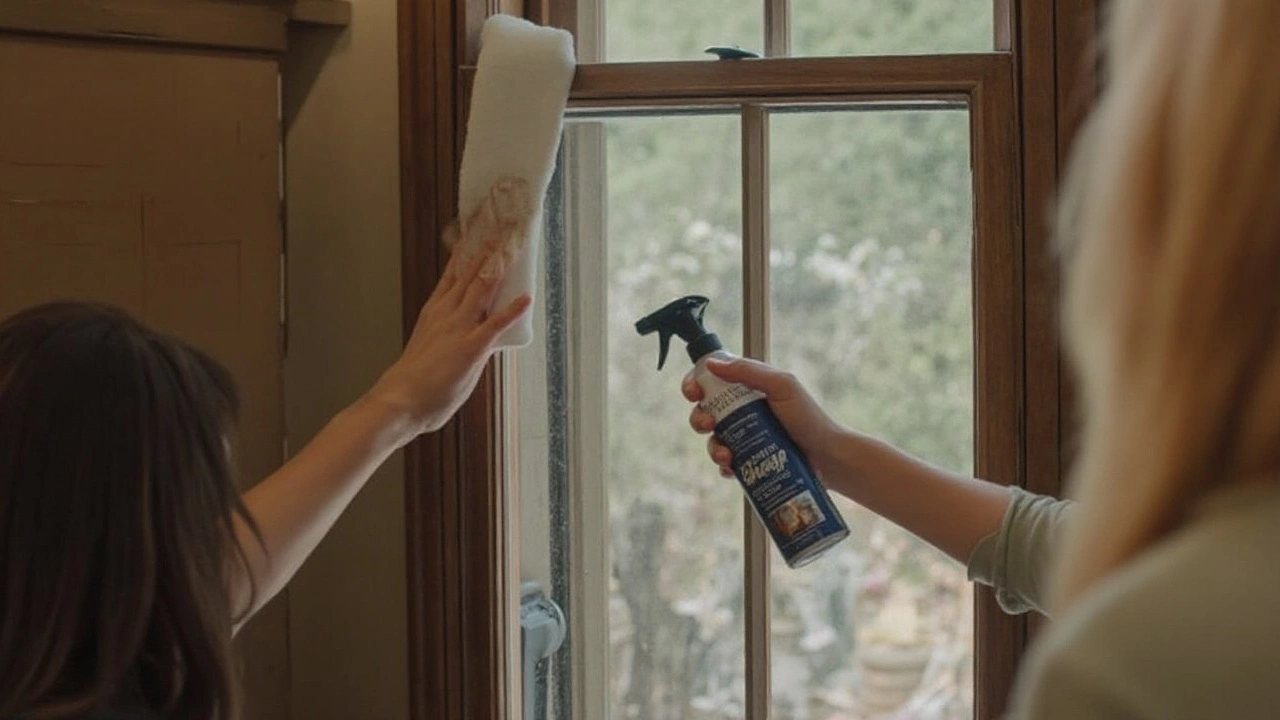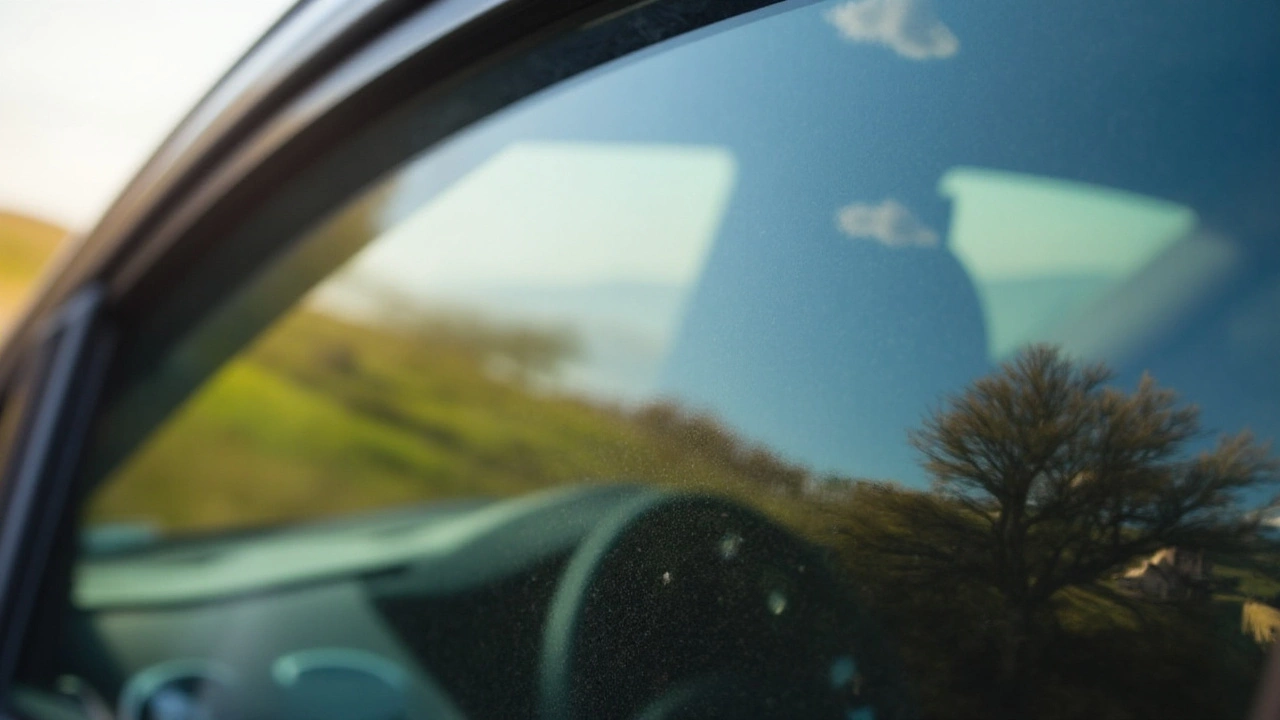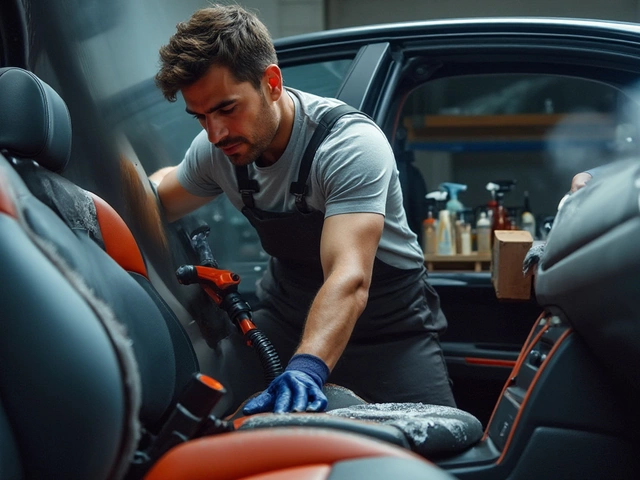Lustrous, cool, and energy efficient—these are just a few of the perks tinted windows bring to your home or vehicle. But like any prized possession, tinted windows require a bit of know-how for proper upkeep. Many people unknowingly use the wrong products and techniques, leading to costly repairs or replacements sooner than expected.
Diving into the world of window tint maintenance isn’t daunting if you start with the basics. Whether you're a new tint owner or a seasoned one seeking to refresh your care routine, understanding which products to avoid is crucial. Let’s explore the worst offenders you might be tempted to reach for, and why they should stay off your cleaning list.
- Understanding Tinted Windows
- Common Mistakes with Tinted Windows
- Products to Avoid
- Proper Cleaning Techniques
- Maintaining Your Window Tint
Understanding Tinted Windows
Tinted windows are more than just a stylish statement. They offer a practical solution for reducing glare, enhancing privacy, and improving energy efficiency. The technology behind window tinting has evolved dramatically over the years. Today, it's not only about aesthetics. Modern window films are engineered with specific layers and materials that reflect or absorb solar heat while letting visible light through. This selectively blocks harmful UV rays, helping to protect interiors from fading and damage.
The window tinting process typically involves applying a thin, layered film to the inside surface of the glass. This film can be made from a variety of materials, including dyed polyester, metalized films, or even ceramics, each offering different levels of heat reduction and clarity. The choice depends on personal preference and specific needs. For example, ceramic tints are less reflective than metalized films and can provide a clearer view with better UV protection. This level of customization makes it essential to choose the right type for your circumstances.
Not surprisingly, tinted windows have gained popularity in both automotive and architectural applications. According to the International Window Film Association, properly installed window tints can reject up to 78% of solar heat, contributing significantly to reducing energy bills. By blocking solar heat, window tints lessen the reliance on air conditioning systems, which is especially beneficial in warm climates like Brisbane's. In fact, research shows that in hot regions, window tints can reduce cooling costs by as much as 30%.
"Window tints have proven themselves not just in aesthetics, but in functionality as well," says John Parker, a renowned expert in sustainable building solutions.
Another key benefit of window tints is the enhancement of privacy and security. This aspect is crucial for car owners who might carry valuable items or for homeowners who want to maintain a sense of seclusion from the street view. Depending on the tint's darkness, it becomes more challenging for onlookers to see inside, yet those inside can enjoy a clear view outward.
Moreover, today's window films come with advanced features such as shatter resistance. In the event of an impact or break, the film helps keep the glass fragments together, reducing the risk of injury and blocking potential intruders. This added layer of security is substantial for both homes and vehicles.
Understanding the value of tinted windows forms the base for maintaining them correctly. Knowing the kinds of films available and their benefits can lead you to make an informed decision when purchasing, but it also underscores the importance of using the right cleaning and maintenance techniques. Only with the proper care can you ensure that your tinted windows continue to provide their full range of benefits for years to come.
Common Mistakes with Tinted Windows
Tinted windows can be a great asset, but like any enhancement, they come with their own set of challenges. One of the most common mistakes people make with tinted windows is using ammonia-based cleaning products. These cleaners are often found in household window sprays and can wreak havoc on the tint, leading to a breakdown of the adhesive and eventual peeling. People observe an initially sparkling clean surface, only to notice over time a dullness or bubbling that compromises the tint's aesthetic appeal.
A popular misconception is that all-purpose cleaners are safe for all surfaces, and sadly, this isn't true for your precious window film. Another frequent error involves sharp or abrasive materials like razors, scrapers, or even harsh scrubbing pads. These tools might seem like they’d help in removing persistent dirt or streaks, but they often leave unsightly scratches on the tint. These scratches not only look unpleasant but can also weaken the integrity of the film over time, leading to more significant damage.
Then, there's the matter of cleaning frequency. It might sound counterintuitive, but excessive cleaning is also a culprit. People think constant attention keeps the tinted windows at their best, yet too much scrubbing or repeated exposure to even mild soaps can strip away the film’s coating. Balance is crucial here; tinted windows require gentle cleaning with significant intervals to ensure they maintain their brilliance without being stripped bare.
"Once the tinted film is damaged, the only resolution is to replace it," says John Phillips, a renowned window tinting expert. "Proper understanding and routine adjustment in maintenance methods can save many the unnecessary hassle and cost of re-tinting."
Finally, neglecting manufacturer guidelines is a common yet major misstep. Every tint has specific care instructions provided by manufacturers, which include details on the best cleaning methods and products. Ignoring these guidelines often results in people unknowingly voiding warranties or committing irreversible damage, as not all tints react the same to various conditions and treatments.
A rare but insightful resource for identifying these common pitfalls lies in customer reviews and feedback shared on online forums related to window tinting. These platforms often feature firsthand accounts from users who have learned from experience, providing a treasure trove of practical tips that aren't typically covered by formal guides.

Products to Avoid
When it comes to caring for your tinted windows, some products can do more harm than good. If you're keen on preserving their sleek appearance and effectiveness, it's crucial to steer clear of certain cleaning agents and tools. Many household cleaners contain chemicals that can either erode the tint or cause unwanted discoloration. For example, ammonia-based cleaners—commonly found in glass-cleaning products—are notorious for wreaking havoc on window film. These cleaners may be great for standard glass, but they can strip the film's adhesive, leading to bubbles or peeling.
In addition to ammonia, harsh abrasives like baking soda should also be avoided. It might seem like a gentle, all-natural alternative, but the tiny particles can scratch the delicate surface of the film. You'll want to also keep away from rough cleaning implements such as scouring pads or brushes with hard bristles. These can scratch and damage the tint, particularly when used with excessive force. Microfiber cloths are often recommended as a safer alternative, allowing you to clean the surface without causing abrasions.
Another common error is the use of vinegar-based solutions. Although vinegar is a popular cleaning agent for its ability to cut through grime, its acidic nature can wear down the tint over time. Opting for a gentler approach with lukewarm water and a soft cloth is usually sufficient for regular maintenance. It's worth noting that some experts, like those at the International Window Film Association, recommend avoiding any strong solvents that aren't specifically designed for window films.
"The right cleaner and technique can extend the life of your tint dramatically, while the wrong ones can produce irreversible damage," says John Smith, an industry expert.
On a practical note, stay away from adhesive removers. While they might seem tempting to tackle sticky residues or stubborn dirt, they can also attack the film's adhesive backing, leading to premature failure. Lastly, any heavy-duty chemical cleaners that boast 'all-purpose' labels are often filled with components that are too strong for tinted surfaces. Instead, always check labels and ensure your chosen cleaner is approved for use on films. By taking these precautions, you can help maintain the appearance of your tinted windows and ensure they continue to man their post efficiently, blocking UV rays and offering privacy.
Proper Cleaning Techniques
Approaching the task of cleaning tinted windows with care can preserve their shine and functionality in the long run. First and foremost, it’s important to begin with the right tools and cleaning agents. Forget abrasive scrubbers or harsh, ammonia-based cleaners. Instead, opt for a soft microfiber cloth, which is gentle yet effective at wiping away dust and smudges without scratching the film. Pair this with a mild, non-ammonia glass cleaner. Such products are easy to find at many stores and are designed to be kind to your tint.
The process of cleaning tinted windows begins by gently wiping down the surface with a dry microfiber cloth to remove loose dirt. This prevents the risk of dust scratching the window when applying a cleaning solution. Once dry cleaning is done, lightly spray the cleaner onto the window. It's crucial not to drench the tint, as excessive moisture can seep under the film. Then, with a new cloth, wipe in one direction, from top to bottom, ensuring even and efficient removal of the cleaner and the grime.
Developing a routine cleaning schedule is beneficial to maintaining the aesthetic and functional qualities of your window film. Regular cleaning, at least once a month, can deter the buildup of dust and grime, which, over time, can become difficult to remove. Repeat gentle cleansing techniques regularly to keep your windows looking new. Emphasizing consistency in care ensures a long-lasting tint that keeps performing its job well.
Expert window tinters often suggest vinegar-based solutions as a natural, effective alternative to chemical cleaners. A mixture of one part vinegar to four parts water is both eco-friendly and formidable against streaks and sticky residues. As Bob Zimmer from Tint Masters once said,
"A natural solution doesn't just clean properly; it reflects how we should handle our possessions—with care and consideration."Remember, a delicate touch goes a long way in the longevity of your window tint.
Beyond the day-to-day cleaning, it is necessary to periodically check the edges of your window film to ensure they are secure and not starting to lift. Early detection can save a lot of hassle down the line, allowing for minor repairs before major problems develop. By dedicating time to proper maintenance of your tinted windows, you not only preserve their functionality but also their role as an enhancement to your space.

Maintaining Your Window Tint
Maintaining your tinted windows is not just about keeping them clean. It is about preserving their functionality and aesthetics, ensuring the investment is protected for years to come. One of the primary factors contributing to the longevity of window tints is proper maintenance, and it starts with an understanding of what keeps them in tip-top condition. You need to be mindful of frequent exposure to harsh weather conditions or potentially harmful substances, as these can significantly diminish the life span of your window tint. Regular monitoring is crucial, so if you notice any changes such as bubbling or peeling, consider addressing these issues promptly to prevent further damage.
A key practice in ensuring longer-lasting tint is scheduling regular inspection intervals. This proactive step allows you to spot minor abrasion or fading issues which are easier, and usually cheaper, to correct earlier rather than later. Traffic pollution, a notable concern especially in bustling urban environments, can slowly degrade the edges and corners of your tint film. Implementing a habit of routine checks will empower you to tackle these little blemishes with ease. Moreover, investing in maintenance, while it might seem to require time and effort, ensures you are not met with unexpected, cumbersome repair costs in the long run.
Environment's Impact on Window Tint
Another aspect to consider is the influence of your local environment. Living by the coast, for instance, means your windows are subject to high humidity and air salinity, which can cause gradual deterioration if not tended to properly. Meanwhile, residing in dry, sunny climates necessitates measures for shielding the tint against the relentless sun. UV protection layers on the tint can mitigate this, but their effectiveness also depends on consistent care. Adopting shading techniques like using UV-reflective protective films can offset some of this environmental wear and tear, thereby prolonging the life of your window tints beautifully.
According to a study conducted by the International Window Film Association, appropriately maintained window films can reduce heat transmission by up to 80%, greatly enhancing energy efficiency. Such performance highlights why keeping your window films clean and functional is beneficial for both your wallet and the environment. By sticking to a routine and being informed about potential risks, you're not only preserving the look of your windows but also staying true to your commitment to a more sustainable living space.
The experts at Home Tinting HQ suggest, "Regular maintenance isn't just about aesthetics. It maximizes energy efficiency, enhances privacy, and keeps harmful UV rays at bay."
Common Mistakes to Avoid
It's just as crucial to avoid common pitfalls in maintaining your tinted windows. Frequent cleaning with excessive or incorrect amounts of water can cause damage to the adhesive layer of the tint, leading to wrinkles and discoloration. Even using a seemingly harmless colored or heavily scented spray can leave discoloring residues. While tint-specific cleaning products are available in the market, always ensure they are ammonia-free and do not contain harsh chemicals that can negatively interact with the film.
Finally, adopting the right cleaning techniques completes the maintenance puzzle. Opt for a soft microfiber cloth rather than abrasive sponges or paper towels. These allow you to clean gently and thoroughly without leaving scratches. A simple mixture of soap and warm water often suffices for regular cleaning, delivering just the right balance of cleanliness and preservation. Being mindful with each swipe saves you from unnecessary repairs and ensures your window tints continue to do their job, be it privacy protection or sun-blocking efficiency. It is through such thoughtful care that you extend the service life of your tinted films, proving that the best maintenance isn't always intricate—just informed and consistent.






